31 Cover Crops For Raised Beds
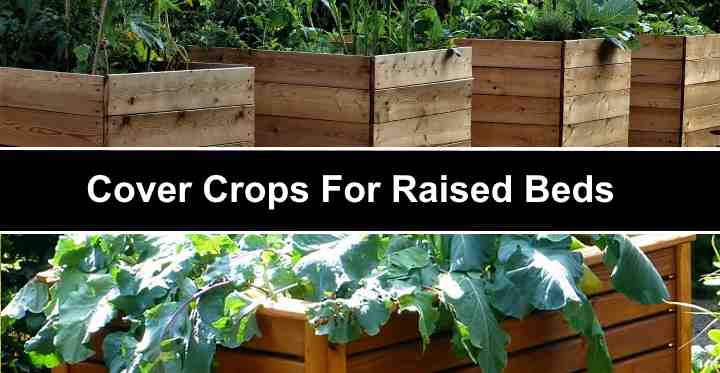
Planting cover crops for raised beds is a game changer if you grow vegetables or legumes. Cover crops help to enhance soil health, increase biodiversity, loosen soil structure, and sustainably boost crop yields. Also called green manure, planting cover crops on raised beds is helpful for small gardens and urban spaces. Crops like rye, barley, peas, and clover help fix nitrogen, add nutrients, and boost overall soil health.
What are the benefits of planting cover crops in your vegetable patch? Which crops are best for fixing nitrogen levels, suppressing weeds, and improving soil structure? This article answers these questions and more. Please read on if you are looking for natural ways to improve the health and productivity of your raised bed garden.
What Are Cover Crops for Raised Beds?
Cover crops for raised beds are plants grown primarily to benefit the soil and garden ecosystem. Rather than growing for harvesting, crops like oats, barley, wheat, and beans are planted during non-growing seasons. The plants help prevent soil erosion, suppress weeds, and improve soil fertility, contributing to soil health and sustainable gardening practices.
Selecting the Right Cover Crops
The first step to integrating cover crops into your gardening practice is identifying your soil’s needs and what you hope to achieve. Different types of crops have different uses and benefits. Here is a short guide to choosing suitable crops for cover in raised beds:
Loosening the soil: Grains like rye, barley, and oats are ideal for alleviating soil compaction. Additionally, they add biomass to the earth and break up compacted layers with their deep root systems.
Nitrogen fixers: Legumes, including clover, vetch, and peas, are nitrogen-fixers. These plants have a symbiotic relationship with Rhizobium bacteria, which colonize the root nodules and convert atmospheric nitrogen into a form that plants can use. This process is vital for enriching the soil with nitrogen, a critical nutrient for plant growth. For the most effective nitrogen fixation, these legumes should be planted in well-drained soils with a neutral to slightly acidic pH.
Weed suppression: Broadleaf crops like mustard, winter wheat, rye, and oats are ideal for smothering weeds in raised beds. They also release nutrients into the soil when turned over before the growing season.
Planting and Managing Cover Crops
Timing is crucial when planting cover crops. The optimal time to plant them is at the end of the growing season, after you have harvested your vegetables or flowers. This scheduling allows cover crops sufficient time to grow during the off-season, where they play a vital role in protecting your soil by mitigating the impact of cold temperatures.
Additionally, while cover crops universally benefit soil health, choosing the specific type of crop and the planting strategy should be carefully tailored to local conditions. For instance, in cooler climates, winter-hardy cover crops such as rye or hairy vetch can offer soil cover and provide benefits throughout the winter. Conversely, in warmer regions, cover crops like cowpeas or buckwheat might be more appropriate during the warm season to suppress weeds and enhance soil fertility.
The management of cover crops involves allowing them to grow until they are just about to set seed, which is the stage when they confer the most benefits to the soil. At the ‘flowering stage,’ the plants are brimming with potential energy and nutrients. Therefore, cutting them down and incorporating them into the soil at this time ensures an exceptional nutrient boost.
In addition, working cover crops into the soil adds organic matter. This also improves its structure, water retention, and microbial activity.
Incorporating Cover Crops Into the Soil
You have two options to incorporate cover crops into the soil. Once they have reached the optimal stage for incorporation, you can do one of the following:
Chop and drop: This method involves cutting the cover crop and leaving it on the surface as a mulch. This can help suppress weeds and retain soil moisture.
Turning in: For a more immediate impact on soil structure and fertility, you can turn the cover crop into the soil. This type of green manure allows the organic matter to decompose directly in the ground, providing a rich environment for your next planting.
It’s essential to wait a few weeks after incorporating your cover crop before planting your next crop. This period gives the soil microbes time to break down the organic matter and release nutrients into the soil.
The Benefits of Cover Crops for Raised Beds
The benefits of planting cover crops are more than enhancing the soil structure and nutrient levels. Increased organic matter helps retain moisture, prevents soil erosion, and stops weeds from growing. Also, cover crops help to reduce soil compaction. Overall, it leads to healthier plants and higher yields in raised beds.
Here are a few more benefits that planting cover crops has for your raised beds:
Pest and disease management: Certain cover crops have allelopathic properties. Allelopathy refers to plant compounds that can help suppress weeds, soil-borne pests, and diseases. Also, increased nutrient levels make plants more resilient and resistant to diseases and pests.
Attract beneficial insects: The flowering stages of certain cover crops attract pollinators and beneficial insects, promoting a balanced ecosystem within the garden.
Increase biodiversity: Introducing a variety of cover crops can increase the biodiversity of your garden, creating a more resilient and robust ecosystem.
However, it’s important to acknowledge the potential challenges of using cover crops. These include the need for timely management to prevent them from becoming invasive or competing with main crops for nutrients and water. Selecting the appropriate cover crops and managing them correctly are vital steps to avoid these issues.
The Best Cover Crops for Raised Beds
Let’s look in detail at the best cover crops you can plant in raised beds.
Radish (Raphanus sativus)

Radish is a good fall cover crop for raised beds because it provides plenty of organic matter and helps with soil aeration. You should plant the crops when harvesting your main crops—early potatoes, celery, wheat, and snap beans.
Oilseed radishes are most commonly used as a cover crop. They have a large taproot, grow fast, and provide plenty of foliage to work into the soil as green manure. According to research, using radish as a cover crop also helps loosen compacted soil, absorb nitrogen into the ground, and suppress weeds.
You can also use daikon or winter radishes as a cover crop for your vegetable patch. Like oilseed radishes, it has a large white taproot that effectively penetrates the soil. Its deep roots help break up compacted ground, improving drainage and aeration. This process results in healthier plants in the next growing season.
With both varieties of radishes, you can leave the taproot in the soil to decompose and release nitrogen in the spring. However, you can harvest daikon radishes and use the spicy root in cooking or making kimchi.
Mustard (Brassica spp.)

Mustard is an ideal cover crop to help combat pests and diseases in raised beds. Mustard roots contain organic compounds called glucosinolates, which contain sulfur and nitrogen. These compounds help inhibit soil-borne fungi and microscopic pests. Additionally, the deep root system stretches 3 ft. (0.9 m) below the surface, helping to reduce compaction.
Mustard greens have a dual purpose in a vegetable patch. First, you can work the leafy greens into the soil as green manure to improve its organic content. Second, you can enjoy the edible green in salads.
However, it’s vital to remember that mustard self-seeds easily. Therefore, you should harvest it or work it into the soil before it goes to seed.
Alfalfa (Medicago sativa)

Alfalfa is a versatile and nutritious legume perennial cover crop. Like most legumes, alfalfa is effective at nitrogen fixation. Also known for its deep root system, it helps break up compacted soil, enhances water retention, and improves soil fertility. For best results, you should sow alfalfa in August.
Alfalfa is a highly versatile cover crop. It provides excellent forage for livestock as it contains high levels of protein. Also, you can use it as green mulch like straw or work it into the soil as green manure. Also, its blanket of purple flowers attracts bees, butterflies, and pollinators to gardens.
To use alfalfa as a cover crop, cut the foliage to soil level and leave the greens to decompose. By spring, the foliage will be incorporated into the soil, and you can plant your new crops as usual.
Pea (Pisum sativum)

Common peas are a popular edible crop and a beneficial cool-season cover crop. As a legume, peas fix atmospheric nitrogen into the soil, enhancing fertility and promoting plant growth. Peas don’t tolerate heat and are cold-hardy. Therefore, you can plant them later in the season in temperate climates.
Peas have other advantages as cover crops. Their dense foliage suppresses weeds, prevents erosion, and provides organic matter when turned into the soil. Therefore, they contribute to sustainable farming and improved soil health. As a bonus, you can harvest young pea shoots to add a nutritious, crunchy texture to salads.
Hairy Vetch (Vicia villosa)

Hairy vetch is a winter cover crop ideal for green mulch and improving poor soils. The plant’s dense foliage is perfect for suppressing weeds and locking moisture into the ground. Also, its robust root system helps prevent soil erosion. Being a type of legume, hairy vetch is a valuable crop for nitrogen fixation.
Hairy vetch is particularly beneficial in crop rotations to improve soil health and structure. Its rapid growth habit also makes it ideal for ground cover. And, despite its potential to become invasive, the legume cover crop is easy to control. Also, it has attractive spikes of purple flowers and pinnate leaves that attract pollinators and beneficial insects.
Lentils (Vicia lens)

The main benefit of lentils as a cover crop is their ability to get additional nitrogen into the soil, boosting its fertility naturally. However, they’re more than just nitrogen fixers. Lentils have a dense canopy and efficient root system. These characteristics help suppress weed growth by creating a natural barrier.
Lentils are an annual winter plant with an excellent root system. This helps to prevent soil erosion by binding the soil. Therefore, planting lentils after harvesting crops improves soil structure, gives a nutrient boost, and reduces the risk of nutrient runoff.
Another advantage of planting lentils as a cover crop is pest resistance. For example, lentils help break pest and weed cycles when used in crop rotation. The drought-tolerant plants thrive in cool climates and require little irrigation.
Fava Beans (Vicia faba)

Fava beans are a versatile cover crop with numerous benefits for raised beds. As a legume, fava beans are excellent nitrogen fixers, improving soil fertility naturally. The best way to use the legumes is to cut them back when flowering before the beans develop. This way, you maximize the nitrogen release.
Fava beans also have a deep root system that helps break up compacted soil and improve its structure. You can plant them in the fall, as they can withstand cold temperatures and grow well in cool weather. In addition to fixing nitrogen, their rapid growth helps suppress weeds and provide ground cover, reducing erosion and improving soil structure.
In addition to their benefits as a cover crop, fava beans are a nutritious edible crop. You can harvest the young pods for fresh beans or let the beans mature for drying and storage. Their versatility and dual purpose make them a valuable addition to your vegetable patch.
Winter Rye (Secale cereale)

Winter rye is a popular cover crop for increasing organic matter and biomass in raised vegetable beds. The primary benefit of rye comes from its fibrous root system. Its roots help protect the soil from erosion during winter and prevent runoff. The roots then decompose, boosting levels of organic matter in the raised bed.
Additionally, winter rye scavenges excess nutrients from the soil, reducing the risk of leaching. The best time to plant winter rye is in the fall, which allows for early spring growth. Then, you can use the “chop and drop” method. This means you can mow it before it goes to seed and let it drop as green manure.
The benefit of winter rye is that it can be seeded later in the season compared to other cereals. It’s a versatile and beneficial cover crop for raised bed gardening, providing numerous advantages for soil health and crop production.
Oats (Avena sativa)

Oats are a popular cool-season annual grass with numerous benefits as a cover crop plant. The advantages of oats are their fibrous root system that helps improve soil structure and prevent erosion during winter. Oats also effectively suppress weeds due to their dense foliage that creates mellow mulch.
To ensure your raised bed soil benefits from oats, sow the crop in the fall and grow over winter. This gives you plenty of affordable biomass in spring. Oats are also a good source of organic matter, adding nutrients back into the soil as they decompose. The plant is also an excellent nitrogen fixer, absorbing excess nitrogen in the ground without affecting phosphorus and potassium levels.
Sorghum Sudangrass (Sorghum bicolor x Sorghum sudanense)

Sorghum-sudangrass is a warm-season cover crop popular for suppressing weeds, improving soil health, and providing biomass for mulching. The tall grass creates a dense canopy that shades out competing weeds. It also has allelopathic properties, where it releases chemicals that inhibit the growth of certain weeds and pests.
One of the key benefits of sorghum-sudangrass is its deep root system. This provides soil benefits regarding erosion control and boosting levels of organic matter. The roots also help with nutrient cycling, as they scavenge for excess nitrogen, converting it into beneficial proteins, enzymes, and amino acids.
The best way to use sorghum-sudangrass is to sow it mid-fall, wait a few weeks, then mow and leave it to decompose on the soil surface. Alternatively, allowing the crop to grow until the first winter frosts can naturally kill the plants, simplifying their breakdown and integration into the soil.
Clover Plants for Cover Crops
Due to nitrogen-fixing properties, clover plants are a popular choice for cover crops in raised beds. The three common clover types are red clover, crimson clover, and white clover. Related to legumes, clover plants have deep root systems that help improve soil structure and fertility. Also, the flowers attract pollinators to the garden.
You can sow clover plants in the fall and turn them into the soil in the spring three weeks before planting vegetables.
Red Clover (Trifolium pratense)
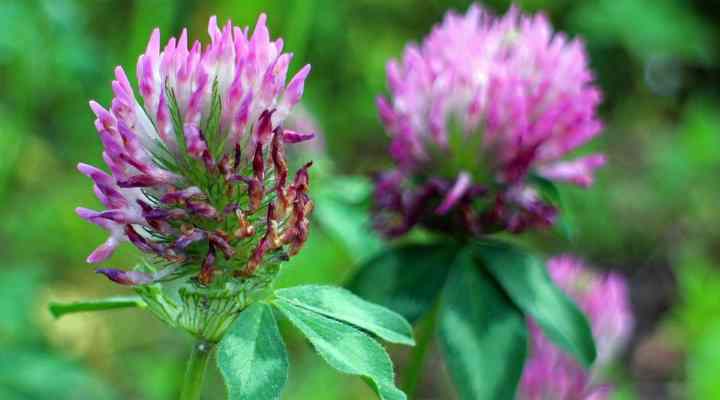
Red clover is one of the most common cover crop plants. It’s an excellent nitrogen producer, and its robust taproot system is ideal for breaking up compacted soil, suppressing weeds, and improving drainage. Red clover also attracts pollinators with its pinkish-purple flowers, benefiting the overall health of the garden ecosystem.
White Clover (Trifolium repens)
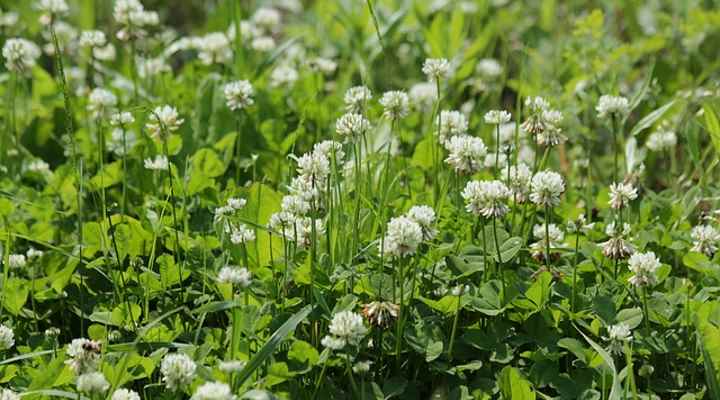
White clover is a resilient cover crop choice because it works like living mulch, suppressing weeds. Like all clover plants, white clover is a soil nitrogen fixer. It has an interconnected root system that helps to prevent soil compaction and erosion. Additionally, clover works well as a lawn grass alternative.
Like red clover, it’s easy to incorporate white clover into the soil as green manure. All you must do is turn it into the soil in early spring to give the ground a vital nutrient boost.
Crimson Clover (Trifolium incarnatum)

Crimson clover is a popular cover crop choice for raised beds because it increases nitrogen and prevents soil erosion due to its ability to fix nitrogen into the soil. Like other clover plants, the crimson variety improves soil fertility and health. Of all the clover varieties, crimson clover is the best at attracting pollinators to the gardens, benefiting nearby crops.
To use crimson clover for nitrogen fixation, weed suppressing, and green manure, sow seeds in fall. The ideal time for sowing is six to eight weeks before the first fall date. You can then till into the soil before planting new crops.
Yellow Blossom Clover (Melilotus officinalis)

Yellow blossom clover is an important cover crop because of its drought tolerance. The yellow-flowering plant fixes atmospheric nitrogen, improves moisture retention, and boosts soil fertility. These features reduce the need for synthetic fertilizers. Yellow blossom clover is also a vital source of nectar for honey bees.
Berseem Clover (Trifolium alexandrinum)

Berseem clover is a fast-growing, nitrogen-fixing cover crop that is excellent for use as green manure. The plant’s fibrous root system protects against erosion, breaks up compacted soil, and improves drainage. Its creamy-whitish flowers also attract pollinators. To use berseem clover as a weed suppressant, you must plant it after the threat of frost has passed.
Barley (Hordeum vulgare)

Barley is an excellent cover crop option for mild winter climates. Barley grows through the winter in Zone 8 and above. Its deep, fibrous root system is ideal for dealing with soil compaction, improving soil structure, and improving drainage. Also, the extensive roots provide plenty of organic matter to improve soil fertility.
To use barley as a green mulch, you only have to mow it down and leave it decomposing on the ground’s surface. This boosts the soil’s nutrient levels and helps improve soil fertility and structure.
Winter Wheat (Triticum aestivum)

Winter wheat is one of the most popular grasses used as a cover crop. It’s a fast-growing plant that germinates quickly and grows rapidly until frost. The benefits of winter wheat are that it prevents soil erosion, out-competes weeds, and cycles nutrients through the soil. It’s also heat, drought, and shade-tolerant.
To use winter wheat as living mulch, chop it down in late winter and let it decompose on the ground. Alternatively, you can let its growth go dormant during winter for it to start growing again in spring. Winter wheat also has allelopathic properties that protect crops against various destructive nematodes.
In addition, winter wheat serves as a valuable food source for wildlife, such as birds, providing them with seeds during the winter months. As a versatile cover crop, winter wheat offers multiple benefits for the overall health of your raised bed garden.
Buckwheat (Fagopyrum esculentum)

Buckwheat is one of the fastest-growing cover crops and is useful in suppressing summer weeds. Other uses in raised beds include green manure, erosion control, and feed for wildlife. The most effective time to plant buckwheat is in summer, when it takes less than two months to become ready for incorporation as green manure.
Buckwheat tolerates low-fertile soils that are moist and drain well. When the foliage breaks down, it releases nutrients into the ground, helping to boost fertility and soil health. Additionally, buckwheat flowers attract pollinators such as bees and other beneficial insects to the garden.
You can also plant buckwheat as a fall cover crop later in the season. It’s not frost-tolerant, so you can leave buckwheat in place after frost kills it. This way, your raised bed benefits from living mulch.
Pearl Millet (Cenchrus americanus)

Pearl millet is a warm-season cover crop with a high root density, ideal for breaking up compacted soil. This ornamental grass thrives in hot, dry conditions and is exceedingly drought-tolerant. Its robust root system helps improve soil structure, reduce compaction, and increase water infiltration. The fast-growing crop grows up to 6 ft. (1.8 m) in a few months.
As a cover crop, pearl millet has many uses in raised beds. It can help increase soil organic matter and suppress weeds and soil-borne diseases. Its tall height means it produces large quantities of biomass that help improve the soil. You can also use pearl millet for crop rotation, where it helps control root-lesion nematodes.
In addition to being a beneficial cover crop, pearl millet benefits wildlife by providing habitat and food sources for birds and other animals.
Cowpeas (Vigna unguiculata)

Also known as black-eyed peas, cowpeas are an annual cover crop, helpful in suppressing weeds in raised beds. Its weed-suppression properties come from a long taproot. The root system also helps to break up compacted soil, improve soil health, and prevent erosion. Because it’s a legume, cowpeas fix atmospheric nitrogen into the ground.
Cowpeas are versatile plants in the pea family. You can allow the plants to reach maturity and harvest the edible pods and peas for consumption. However, letting crops mature removes nutrients from the soil. Therefore, chop the foliage down before seeding to get the benefits from its nitrogen-fixing properties.
Winter Triticale (× Triticosecale)

Winter triticale is a hybrid grain that helps prevent weed growth in raised beds. The cereal grass combines the features of wheat and rye. Therefore, it’s ideal for reducing the risk of nutrient leaching and soil erosion during fall and winter. Triticale also helps improve soil structure and fertility by adding organic matter when tilled into the soil in the spring.
Garbanzo Beans (Cicer arietinum)

Garbanzo beans, or chickpeas, are an excellent cover crop option for raised beds. Like other legumes, garbanzo beans are nitrogen-fixing plants, helping to improve soil fertility naturally. Their deep root system also helps to break up compacted soil, improve drainage, and prevent erosion. They are also helpful for crop rotation to boost nitrogen levels between seasons.
To use garbanzo beans for their nitrogen-fixing properties, plant the cover crops in the fall. Additionally, garbanzo beans provide a great source of green manure when their foliage is turned into the soil.
Chickpeas are also one of the most commonly consumed legumes worldwide. You can grow the plants to maturity to harvest the delicious peas for use in soups, salads, humous, and other dishes.
Scarlet Runner Beans (Phaseolus coccineus)

Scarlet runner beans are easy-grow flowering vines you can use as cover crops in raised beds. These climbing beans help fix nitrogen into garden soil, improving fertility for future crops. In addition to nitrogen fixation, the bean vines have an extensive root system, helping to improve soil structure and prevent erosion.
The vines can also function as a living mulch, shading the soil from the sun and reducing weed growth.
Scarlet runner beans also have ornamental qualities. The long vines grow up to 10 ft. (3 m) long, and decorative long bean pods are 10” (25 m) long. In spring and summer, attractive red flowers add a touch of vibrancy and attract bees and hummingbirds.
Soybeans (Glycine max)

Soybeans are a popular cover crop choice to plant in summer for nitrogen fixation. They have symbiotic bacteria that fix atmospheric nitrogen. Additionally, soybean plants help reduce soil erosion, water runoff, and heavy weed growth. Therefore, planting soybeans in raised beds helps to improve soil fertility and reduce the need for synthetic fertilizers.
Sweet Alyssum (Lobularia maritima)
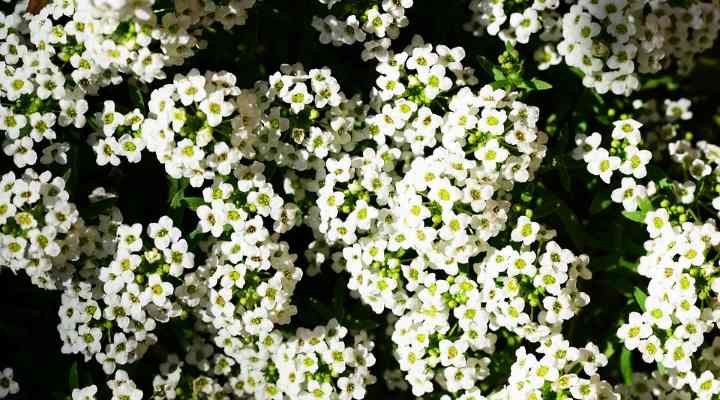
Sweet alyssum is an attractive, beneficial cover crop for raised beds. Its dense, spreading, low-growing habit helps suppress weeds in vegetable patches. Due to its shallow root system, its roots don’t compete with the deeper roots of vegetables. Also, you can boost organic matter levels when you till it in the soil.
To use sweet alyssum as a cover crop, you should seed it heavily to form dense growth. This method protects the soil and keeps weeds away.
Sweet alyssum has clusters of small, white, sweet-smelling flowers. These add a pop of color at ground level, creating a carpet of white flowers that look like snow. The fragrant flowers also attract beneficial insects such as bees, butterflies, and ladybugs.
Rapeseed (Brassica napus subsp. napus)

Rapeseed has all the features of an effective cover crop for raised beds. It reduces soil compaction, suppresses weeds, produces biomass, scavenges nutrients, and improves soil health. Like other plants in the Brassica genus, rapeseed produces glucosinolates that help to reduce soil-borne pests and diseases.
Another valuable feature of rapeseed is its deep root system that can help break up compacted soil, improve drainage, and enhance soil structure. Also, as a cover crop, rapeseed grows easily in various climates and soil types.
After growing rapeseed as a cover crop, you can either incorporate the plant material into the soil as green manure or leave it on the surface to decompose.
Forage Kale (Brassica oleracea sabellica)

Forage kale is a versatile cover crop to protect soil from erosion in raised beds. The benefits of forage kale as a cover crop come from its taproot, which helps break up the soil. This prevents soil compaction, improves soil structure, and aerates the ground.
Kale has dense foliage that helps suppress annual weeds. It’s also an effective scavenger plant that removes excess nitrogen, phosphorus, and calcium. The fast-growing crop plant also germinates rapidly, survives cold winters, and quickly decomposes the following spring.
Green manure is one of the best ways to use forage kale to improve soil health. In the fall, you can mow the plant and work it into the soil before the first frost. This soil amendment enhances soil health with plenty of biomass and helps new crops grow better the following spring.
Phacelia (Phacelia tanacetifolia)

Phacelia is a lesser-known cover crop gaining popularity for its numerous benefits to soil health. This purple-flowering annual is ideal for green manure, deep root system, and fragrant flowers. Planting phacelia in the fall means it dies by winter, returning nutrients to the ground.
In addition to being a useful cover crop for green manure, the plant’s fragrant purple flowers attract beneficial insects like bees, butterflies, and other pollinators during summer. Therefore, phacelia can be a valuable cover crop to enhance biodiversity with sustainable gardening practices.
Creeping Red Fescue (Festuca rubra)

Creeping red fescue is a popular cool-season grass cover crop that can help with erosion control. The weed-suppressing plant thrives in the shade and tolerates various climates and habitats. The grass grows in dense, fine-textured clumps that help to prevent erosion and improve soil structure. Additionally, its fibrous root system breaks up compacted soil and improves drainage.
This grass-cover crop is low-maintenance and requires little to no mowing. Its ability to tolerate shade makes it a great lawn alternative for areas with limited sunlight. Creeping red fescue also provides excellent ground cover, suppresses weed growth, and reduces the need for herbicides.
Borage (Borago officinalis)

Borage is a beautiful garden herb that also performs well as green manure for raised beds. The soil benefits of borage come from its long taproot that helps break up compacted soil, improving drainage and aeration. Also, its dense foliage and large leaves help to create living mulch—protecting the ground from excessive rainfall and hindering weed growth.
Another benefit of borage as a cover crop is its weed suppression properties. Several studies suggest that interplanting borage with crops can help increase yield and reduce the need for herbicides.
Besides its usefulness in improving soil health, borage enhances biodiversity in gardens and raised beds. Its vibrant blue flowers are a favorite of bees and other pollinators. Once established, borage will continue to self-seed and spread throughout the garden. As a bonus, you can also consume borage leaves and flowers.
Hyacinth Bean (Lablab purpureus)
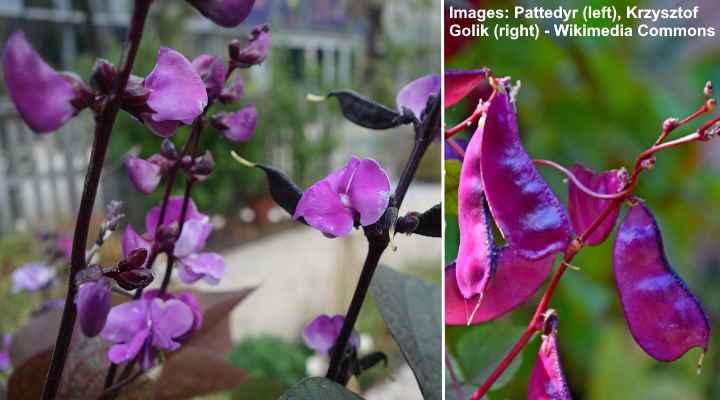
Hyacinth bean is a versatile and fast-growing cover crop that can improve the soil structure of raised beds. Also called Indian bean, this legume is a popular ornamental crop for its cut flowers. However, its nitrogen fixation properties make it helpful in improving soil fertility.
Hyacinth bean plants are excellent for weed suppression and preventing soil erosion. It’s also one of the best cover crops for being effective in acidic soils and drought-prone landscapes. Additionally, green manures like lablab provide a rich supply of nutrients for healthy plant growth.
Cover Crops: Frequently Asked Questions
What to cover raised beds with in winter?
In winter, you can cover raised beds with various plant materials to protect the soil and promote garden health. Common options include straw, shredded leaves, fir tree branches, or a layer of well-rotted compost. These materials form a protective barrier against harsh weather conditions. They also prevent soil erosion and insulate the soil.
How to use cover crops in raised beds?
Cover crops are ideal for improving soil health in raised beds. After harvesting crops, you can plant cover crops like clover, rye, or vetch to protect the soil surface. Before the cover crops mature and set seed, cut them down. You can leave them on the ground as mulch or incorporate them into the soil as green manure.
This process enhances soil fertility, suppresses weeds, and prevents erosion, contributing to the overall health and productivity of the raised beds.
What is the best winter cover crop for vegetable gardens?
The best winter cover crop for vegetable gardens depends on your specific goals and climate. Winter rye is often considered an excellent choice as it provides good ground cover, prevents erosion, and adds organic matter to the soil. Other popular options include winter wheat, hairy vetch, or crimson clover. These plants contribute to soil fertility and health during the winter months.
Related articles:
